#smartgridsolutions
Explore tagged Tumblr posts
Text
Power Cable Market Future Outlook Shows Technological Expansion and Rising Global Infrastructure Development Demand
The power cable market future outlook is defined by dynamic trends that reflect a rapidly changing global energy landscape. Driven by increasing urbanization, a shift toward renewable energy sources, and the expansion of smart grid infrastructure, power cables are playing a crucial role in powering modern economies. As demand for electricity continues to grow, so does the need for efficient, reliable, and high-capacity power transmission solutions.
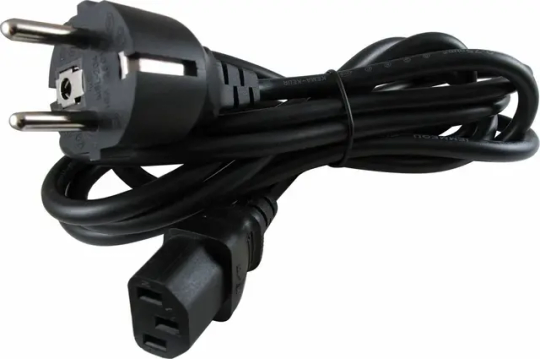
In recent years, governments and private stakeholders have significantly ramped up investments in power infrastructure. From electrification projects in rural areas to the deployment of advanced smart grid systems in urban centers, power cables are fundamental components that enable seamless energy transmission and distribution. These cables, including low, medium, and high-voltage types, are tailored to meet diverse applications, from residential wiring to large-scale industrial and utility-scale projects.
One of the most prominent factors shaping the power cable market’s future is the increasing focus on renewable energy integration. Wind farms, solar parks, and hydroelectric facilities require robust cable systems to transmit power to the grid efficiently. Submarine power cables, in particular, are gaining popularity as offshore wind energy becomes more widespread. These underwater cables allow energy generated offshore to be transferred to mainland grids, ensuring minimal energy loss and stable supply.
Moreover, the growing electrification of transportation is influencing the demand for specialized power cables. Electric vehicles (EVs), electric trains, and charging infrastructure are all powered by systems reliant on high-performance cabling. As nations move towards greener mobility solutions, manufacturers are developing advanced cables that offer higher conductivity, improved insulation, and longer life spans. This segment is expected to significantly contribute to the growth of the power cable market in the coming years.
Technological advancements are another key driver of future market development. Innovations such as superconducting cables, which can transmit electricity with nearly zero resistance, are poised to revolutionize energy distribution. Though currently expensive and in the early stages of deployment, these technologies offer enormous potential for reducing transmission losses and improving grid efficiency. Meanwhile, improvements in materials—such as the use of cross-linked polyethylene (XLPE)—enhance durability, flexibility, and thermal resistance, making cables more reliable in harsh environmental conditions.
Geographically, the Asia-Pacific region is expected to dominate the future of the power cable market. Countries like China, India, and Southeast Asian nations are experiencing rapid industrialization and urban expansion, creating a surging demand for electricity. These nations are also investing heavily in renewable energy and grid modernization, which further boosts demand for efficient power transmission systems. Similarly, Africa and the Middle East are emerging as new markets, especially as energy access initiatives and infrastructure development projects gain momentum.
Europe and North America, while more mature markets, are focusing on upgrading aging electrical infrastructure and expanding smart grid systems. This includes replacing outdated overhead lines with underground power cables, which offer better reliability and safety, especially in areas prone to extreme weather. Moreover, government initiatives supporting carbon neutrality and energy efficiency will continue to fuel demand for advanced power cable technologies across these regions.
Despite strong growth prospects, the industry also faces several challenges. Volatility in raw material prices, such as copper and aluminum, can affect production costs and profit margins. Additionally, the complexity of installation, maintenance, and regulatory compliance—especially in cross-border and undersea projects—may slow down implementation. Nonetheless, continued innovation, supportive government policies, and growing demand from emerging sectors are expected to offset these hurdles.
Sustainability is another central theme in the market’s future outlook. Manufacturers are increasingly focusing on eco-friendly practices, including the development of recyclable cables and reduction of harmful emissions during production. The rise of green building standards and sustainable infrastructure projects further emphasizes the need for low-impact, energy-efficient cabling solutions.
In conclusion, the future outlook of the power cable market is promising and multifaceted. With rising electricity demand, increasing adoption of renewable energy, and growing investment in smart infrastructure, the industry is on a strong upward trajectory. Technological innovation, coupled with a global push toward sustainability and electrification, will continue to redefine the role of power cables in the global energy ecosystem. As such, stakeholders across the supply chain—from manufacturers to energy providers—are well-positioned to benefit from the emerging opportunities in this essential and evolving sector.
#PowerCableMarket#EnergyInfrastructure#SmartGridSolutions#RenewableEnergyIntegration#ElectricPowerTransmission
0 notes
Text
The Role of Single Phase Meters in Smart Grid Solutions
As the global energy landscape shifts toward sustainability and efficiency, the adoption of smart grid solutions has become essential. At the core of these advanced energy systems lies accurate and intelligent metering. Genus Meter, a leading name in the metering industry, is playing a crucial role in powering the future of energy with cutting-edge devices like the single phase meter—a foundational component for smart homes and small commercial establishments.
What is a Single Phase Meter?
A single phase meter is an energy metering device used primarily in residential and light commercial setups where power consumption is relatively lower and the electrical load is supplied through a single phase. These meters measure energy usage in kilowatt-hours (kWh) and are essential for accurate billing, monitoring, and energy conservation.
Unlike older mechanical meters, modern single phase meters from Genus Meter are digital, intelligent, and often equipped with communication capabilities. They not only record energy usage but also support remote reading, tamper alerts, and integration with smart grid networks.
Genus Meter: Pioneering Smart Metering
Genus Meter has established itself as a trusted brand in India’s power sector, offering a wide range of smart metering solutions tailored for utilities, industries, and residential users. With a focus on innovation and reliability, Genus meters are designed to support the digital transformation of the energy ecosystem.
Their single phase meters are:
Compact and durable, designed for long life and low maintenance
Highly accurate, with Class 1 or better metering precision
Tamper-proof, equipped with advanced detection technologies
Smart grid-ready, featuring RF, GSM, or NB-IoT communication options
These features make Genus’s single phase meters ideal for deployment in smart grid solutions, enabling real-time data exchange, better demand forecasting, and efficient grid management.
Smart Grid Solutions: A New Era of Energy Efficiency
A smart grid is an intelligent power distribution system that integrates digital communication, automation, and real-time data analytics to enhance the reliability and efficiency of electricity delivery. It allows utilities to detect and respond to energy demands dynamically, minimize losses, and empower consumers with usage insights.
Genus’s smart metering solutions, particularly their single phase and three-phase meters, are integral to the development of these smart grids. With Genus meters, utilities can:
Monitor energy consumption remotely
Detect outages and tampering instantly
Implement prepaid or postpaid billing flexibly
Integrate with renewable energy sources like rooftop solar
In essence, Genus meters serve as the gateway between consumers and the smart grid infrastructure, offering transparency, efficiency, and control.
Why Genus Single Phase Meters Are a Smart Choice
For residential users, a Genus single phase meter offers multiple advantages:
Real-time monitoring: Know how much power is being used at any moment.
Better budgeting: With usage insights, households can manage bills more efficiently.
Prepaid options: Similar to mobile recharges, users can pay in advance and control usage.
Utility-friendly: Utilities can disconnect/reconnect supply remotely, reducing operational costs.
All these capabilities support India's goal of building a smarter, more sustainable energy infrastructure.
Conclusion
As smart grid technology continues to evolve, the importance of intelligent metering cannot be overstated. Genus Meter is leading this transformation by delivering reliable, high-tech metering devices like the single phase meter, which serve as critical tools for utilities and consumers alike.
With a commitment to innovation, quality, and customer satisfaction, Genus is not just keeping up with the smart energy revolution—it’s leading it.
0 notes
Text
The GE MiCOM Agile P443 Distance Protection Relay delivers fast, secure, and highly dependable protection for transmission and distribution systems. Designed for use in overhead lines, cables, and hybrid networks, the P443 features sub-cycle fault clearance, power swing blocking, and advanced breaker failure protection. With its flexible logic schemes, NERC CIP cybersecurity, and simplified configuration, it ensures high-performance protection in even the most demanding power system environments.
#GEMicomP443#DistanceProtectionRelay#NumericalRelays#PowerSystemProtection#TransmissionProtection#DistributionRelay#SubcycleProtection#MiCOMAgile#GEProtectionRelay#RelayTesting#FeederProtection#BreakerFailureProtection#NERCCompliance#SmartGridSolutions#ElectricalProtectionSystems
0 notes
Text
Discover how High Performance Conductors (HPCs) are revolutionizing America’s aging power grid. This blog explores why HPCs — from carbon core to superconductors — are critical for enabling clean energy, boosting grid capacity, slashing energy loss, and withstanding climate challenges. Through real-world case studies and smart comparisons, it breaks down how these advanced technologies can modernize infrastructure quickly and cost-effectively, all while driving sustainability and innovation. If you're passionate about energy, tech, or future-ready infrastructure, this is a must-read. Say yes to smarter, faster, and greener power with HPCs.

#HighPerformanceConductors#EnergyInfrastructure#EnergyConductors#EnergyTransition#GridModernization#SmartGridSolutions#ClimateResilientGrid#SustainableEnergy
1 note
·
View note
Text
Grid Connected Battery Energy Storage Market Set to Surge Due to Renewable Integration
Grid connected battery energy storage systems store electricity generated from renewable sources and discharge it when demand peaks or supply dips. These systems include lithium-ion, flow, and lead-acid batteries that integrate with solar and wind farms to smooth output fluctuations, reduce grid congestion, and provide ancillary services such as frequency regulation. By enhancing grid resilience and enabling peak shaving, battery energy storage enhances power quality and reliability for utilities, industrial facilities, and commercial end-users. The growing emphasis on decarbonization and the declining cost of batteries drive adoption worldwide. Stakeholders rely on market research and market insights to identify optimal configurations, uncover market trends, and assess market share across segments.
Get More Insights on Grid-Connected Battery Energy Storage Market
https://www.patreon.com/posts/grid-connected-128833528

#GridConnectedBatteryEnergyStorageMarket#LithiumIonBatteryStorage#BatteryEnergyStorageSystems#RenewableEnergyIntegration#SmartGridSolutions#GridConnectedBatteryEnergyStorageMarketTrends#CoherentMarketInsights
0 notes
Text
Powering Cities & Industries: The Role of Pad-Mount Transformers
Introduction
Reliable and efficient power distribution is essential for cities and industries to function smoothly. Pad-Mount Transformers play a crucial role in delivering safe, underground, and space-saving power solutions. These transformers are designed for urban areas, industrial zones, and commercial buildings, where traditional pole-mounted transformers may not be suitable.

What Are Pad-Mount Transformers?
Pad-Mount Transformers are self-contained, tamper-proof transformers installed at ground level. They are enclosed in weather-resistant cabinets and designed for underground power distribution networks. This makes them ideal for areas where safety, space efficiency, and aesthetics are priorities.
These transformers are widely used in urban power grids, residential communities, industrial plants, and renewable energy projects. They ensure consistent voltage regulation, enhanced safety, and lower maintenance costs.
Why Are Pad-Mount Transformers Important?
✅ Safe & Secure Power Distribution
Their locked, tamper-proof enclosures prevent unauthorized access, ensuring public safety.
✅ Compact & Space-Saving Design
Since they are installed at ground level and connected to underground power lines, they save space and improve aesthetics.
✅ Reliable & Energy Efficient
Designed for high efficiency and minimal energy loss, these transformers improve overall power distribution reliability.
✅ Low Maintenance & Durable
Built with corrosion-resistant materials, Pad-Mount Transformers require minimal maintenance and have a long operational life.
✅ Suitable for Industrial & Commercial Use
These transformers are widely used in factories, business complexes, data centers, hospitals, and urban infrastructures.
Key Features of Pad-Mount Transformers
Engineered to meet international standards, these transformers offer: ✔ Fully enclosed, tamper-resistant design ✔ Optimized for underground distribution networks ✔ Highly efficient voltage regulation ✔ Oil-cooled & dry-type options available ✔ Customizable voltage and power ratings ✔ Eco-friendly design with low noise levels
The demand for high-quality transformers is increasing as cities and industries shift towards safe and efficient power solutions. With advanced insulation, cooling technology, and voltage control, these transformers provide maximum energy savings and operational safety.
The Growing Demand for Pad-Mount Transformers
As urbanization expands, underground power networks are becoming the preferred choice for modern infrastructure. The need for reliable power, reduced environmental impact, and better grid performance has led to a surge in demand for efficient and high-performance transformers.
With industries focusing on smart energy management, these transformers help achieve better load handling, improved grid stability, and long-term cost efficiency.
Conclusion
Pad-Mount Transformers are a smart, secure, and sustainable solution for modern power distribution. Their compact design, high efficiency, and low maintenance requirements make them ideal for cities and industries alike. As more regions adopt underground power infrastructure, the demand for advanced transformer solutions continues to rise, ensuring safer and more efficient energy management for the future.
🔗 Contact us today to learn more about our advanced transformers!
Company Details:
📍 Company Name: Padmavahini Transformers 🌐 Website: Padmavahini Transformers 📞 Contact No: +91 99430 49222 📧 Email: [email protected] 📍 Address: S. F. No. 353/1, Door No. 7/140, Ruby Matriculation School Road, Keeranatham, Saravanampatti, Coimbatore, Tamil Nadu - 641035, India
🔗 Follow Us on Social Media: 📘 Facebook 📸 Instagram
#PadMountTransformer#PadMountTransformerInCoimbatore#PadMountTransformerManufacturersInCoimbatoreIndia#PadMountTransformerManufacturersExportersInCoimbatoreIndia#PowerDistribution#EnergyEfficiency#IndustrialTransformers#SmartGridSolutions#UndergroundPower#ReliableEnergy#ElectricalInfrastructure#CompactPowerSolutions#SafeEnergyDistribution#SustainablePower#VoltageRegulation#UrbanEnergySolutions#HighEfficiencyTransformers#GridStability#LowMaintenanceTransformers#RenewableEnergyIntegration
0 notes
Text
Leveraging 5G and Genus Meter Solutions for Optimizing Electric Utility Operations and Smart Grid Management
In today’s world, digital connectivity is essential, but the limitations of 4G LTE networks are becoming more apparent, especially for electric utility providers. Urban power demand often strains these networks, resulting in slowdowns during peak hours.
With the growing number of internet-connected devices, there is an urgent need for a more powerful network to support rising demands. This is where 5G technology steps in.
The fifth generation (5G) network brings faster speeds and a more efficient, responsive infrastructure. This advancement is vital for industries, particularly electric utility providers and grid operators, to enhance and optimize their operations.
Real-time Monitoring and Control
With 5G's ultra-low latency and high bandwidth, it enables real-time monitoring and control of smart grid solutions and networks. This enhanced visibility is crucial for managing and optimizing electricity distribution, identifying faults, and responding to emergencies. Smart grid devices and sensors can communicate instantly with the central control system, improving decision-making and operational efficiency.
In case of grid issues, 5G allows smart energy devices to communicate for fast problem resolution. Additionally, the more stable power network reduces the frequency of power outages.
Grid Automation and Self-Healing
5G enhances grid automation with advanced systems that respond quickly to grid failures, faults, and disturbances through self-healing mechanisms. Automated switches and sensors detect faults, isolate them, and reroute power to ensure continuous service. This automation significantly reduces downtime, improving grid reliability and lowering maintenance costs.
Enhanced Safety for Maintenance Workers
5G technology greatly enhances the safety of maintenance workers in electric utility substations. The high-speed network can quickly transfer data to high-tech wearable sensors, cameras, and other devices. This enables real-time data collection and sharing, allowing maintenance teams to handle complex situations more effectively. Furthermore, maintenance work can be tracked in real-time, providing immediate alerts about potential dangers.
Predictive Maintenance
Predictive maintenance focuses on identifying and addressing potential issues before they lead to unplanned downtime or system failures. Utilities can leverage reliable metering devices like the Genus meter as part of their smart grid solutions to enhance the resilience of power networks. By facilitating predictive maintenance, utilities can anticipate and resolve problems proactively, ensuring smooth operations.
Utility Meters (Net Meters & Smart Meters)
When transitioning to solar power, traditional one-way electricity meters no longer serve all the functions needed. Utility meters with bi-directional metering capabilities are essential, as they measure net energy consumption—subtracting the energy generated by your solar panel system.
Utility meters, such as net meters or smart meters like those offered by Genus, track the electricity consumed from the utility grid as well as the electricity produced by your solar panels and fed back into the grid.
A grid-tied solar system doesn’t allow users to fully offset their energy use, as these systems rely on the utility grid. Solar panels only generate power when the sun is shining, but electricity is needed 24/7. To solve this, the system is designed to produce surplus energy during sunny conditions, which can either be stored in batteries or sent to the utility grid.
The more cost-effective and common solution for homeowners is to send excess energy to the grid, rather than investing in expensive batteries. With net metering, homeowners can store excess power on the grid and receive credits from their utility provider. When their solar panels aren't generating enough energy, they can draw from the grid in exchange for these credits.
The bi-directional metering function is vital in this process. Instead of just measuring energy consumption, bi-directional meters track the energy sent back to the grid. The net usage calculation shows how much electricity a user has contributed to the grid compared to how much they've taken from it.
Smart meters come in two configurations: single-phase and three-phase.
A single-phase meter box price is lower, as single-phase meters are typically used in homes with lower energy demands. In contrast, a three-phase meter box is necessary for premises with higher energy consumption, such as industrial or commercial units, making the three-phase meter box price significantly higher.
Conclusion -
As digital connectivity becomes essential, the limitations of 4G LTE networks are increasingly evident for electric utility providers. 5G technology offers faster speeds, ultra-low latency, and better infrastructure, enhancing smart grid management, real-time monitoring, and predictive maintenance.
With advanced metering solutions like the Genus meter, grid-tied solar systems can efficiently track energy consumption and optimize energy flow to and from the grid. This combination of 5G and smart meters strengthens grid reliability, efficiency, and resilience.
0 notes
Text
Powering Progress: The Impact of Power Electronics on Society and Industry
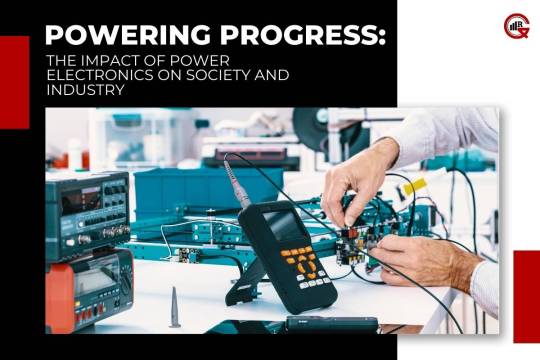
Power electronics is a rapidly evolving field that plays a crucial role in modern electrical systems, ranging from consumer electronics to industrial applications. This article explores the fundamentals of power electronics, its applications, recent advancements, and its significance in shaping the future of electrical engineering.
Power electronics is a branch of electrical engineering that deals with the control and conversion of electric power. It involves the design, analysis, and implementation of electronic circuits and devices to efficiently convert and control electrical energy. Power electronic devices such as rectifiers, inverters, converters, and voltage regulators are essential components in various electrical systems, enabling the efficient management and utilization of electrical power.
Fundamentals of Power Electronics:
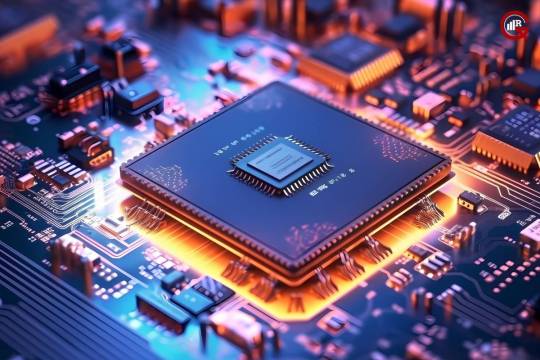
At the heart of electronics are semiconductor devices such as diodes, transistors, and thyristors, which are used to control the flow of electrical current. These devices operate in different switching modes, including rectification, inversion, and regulation, to achieve desired power conversion tasks. Key concepts in electronics include voltage regulation, current control, power factor correction, and harmonic mitigation, all of which are essential for optimizing the performance and efficiency of electrical systems.
Applications of Power Electronics:
Power electronics finds applications in diverse fields, including:
Renewable Energy Systems: Power electronic converters are used in renewable energy systems such as solar photovoltaic (PV) and wind turbines to convert DC power generated by solar panels and wind turbines into AC power suitable for grid integration.
Electric Vehicles (EVs): Power electronic converters control the charging and discharging of batteries in electric vehicles, as well as the conversion of DC power from batteries to AC power for driving electric motors.
Industrial Automation: Power electronic devices are widely employed in industrial automation systems for motor control, variable speed drives, and power distribution, enabling efficient operation and energy savings in industrial processes.
Power Supplies: Switch-mode power supplies (SMPS) based on power electronic converters are used in electronic devices, computers, and telecommunications equipment to provide regulated DC voltage from AC mains power.
Consumer Electronics: Power electronic circuits are integral to the operation of various consumer electronics such as LED lighting, home appliances, mobile devices, and audio amplifiers, providing efficient power conversion and control.
Recent Advancements:

Recent advancements in power electronics have focused on improving efficiency, reliability, and integration in electrical systems. Some notable developments include:
Wide Bandgap (WBG) Semiconductor Devices: WBG materials such as silicon carbide (SiC) and gallium nitride (GaN) offer superior electrical properties compared to traditional silicon devices, enabling higher operating temperatures, lower switching losses, and higher power density in power electronic converters.
Digital Control Techniques: Digital control algorithms and microcontroller-based control systems provide enhanced flexibility, accuracy, and performance in power electronic converters, enabling advanced features such as adaptive control, predictive maintenance, and grid integration.
Multi-Level Converter Topologies: Multi-level converter topologies such as modular multilevel converters (MMC) and cascaded H-bridge converters offer improved voltage waveform quality, reduced harmonic distortion, and enhanced fault tolerance in high-voltage AC and DC power transmission systems.
Energy Storage Systems: Power electronic converters are integral components of energy storage systems such as battery energy storage systems (BESS) and supercapacitors, enabling efficient charging, discharging, and management of electrical energy in grid-connected and off-grid applications.
Smart Grid Technologies: Power electronics play a crucial role in smart grid technologies such as smart meters, grid-tied inverters, and demand response systems, enabling bidirectional power flow, voltage regulation, and real-time monitoring and control of electrical networks.
Significance:

Power electronics are essential for achieving energy efficiency, reliability, and sustainability in modern electrical systems. By enabling efficient power conversion, control, and management, power electronics contributes to reduced energy consumption, lower greenhouse gas emissions, and improved grid stability. As the demand for energy-efficient technologies and renewable energy sources continues to grow, the importance of power electronics in shaping the future of electrical engineering and sustainable energy systems cannot be overstated.
Integration with Internet of Things (IoT): Power electronics is increasingly being integrated with IoT technologies to enable smart and connected electrical systems. IoT-enabled power electronic devices and sensors allow for remote monitoring, diagnostics, and control of electrical equipment, improving operational efficiency and reliability.
High-Frequency Power Conversion: Advancements in high-frequency power conversion techniques have led to the development of compact and lightweight power electronic systems with higher power density and efficiency. High-frequency switching converters and resonant power circuits enable efficient power conversion in applications such as wireless power transfer, electric vehicle chargers, and high-frequency lighting systems.
Resilience to Electromagnetic Interference (EMI): Power electronic systems are designed to mitigate electromagnetic interference (EMI) to ensure reliable operation in electromagnetic environments. EMI filters, shielding techniques, and electromagnetic compatibility (EMC) standards are employed to reduce electromagnetic emissions and susceptibility, ensuring compliance with regulatory requirements and maintaining system reliability.
Energy Harvesting and Wireless Power Transfer: Power electronics are instrumental in energy harvesting systems that capture and convert ambient energy sources such as solar, thermal, and kinetic energy into usable electrical power. Wireless power transfer technologies based on power electronic resonant circuits enable efficient transmission of electrical energy over short and long distances, supporting applications such as wireless charging, sensor networks, and implantable medical devices.
Environmental Sustainability: Power electronics play a vital role in promoting environmental sustainability by enabling the integration of renewable energy sources, energy storage systems, and efficient power management strategies. By facilitating the adoption of clean and renewable energy technologies, power electronics contribute to reducing greenhouse gas emissions, mitigating climate change, and promoting a transition towards a low-carbon economy.
Conclusion:
Power electronics is a dynamic and interdisciplinary field that underpins the design and operation of modern electrical systems across various applications. With ongoing advancements in semiconductor technology, digital control techniques, and energy storage systems, power electronics continues to drive innovation and transformation in renewable energy, electric transportation, industrial automation, and consumer electronics. As we look towards a future powered by clean and sustainable energy, power electronics will play a central role in realizing this vision through efficient power conversion, integration, and management.
#PowerElectronicsInnovation#RenewableEnergyConversion#SmartGridSolutions#HighFrequencyPowerTech#SustainableEnergyFuture
0 notes
Text
Optimize Your System: Choose Our Top-Notch Power Transformer Testing and Commissioning Service

In the realm of efficient power systems, the significance of reliable transformers cannot be overstated. Ensuring these critical components operate at peak performance is pivotal for the seamless functioning of any electrical infrastructure. Welcome to our blog, where we delve into the essential realm of power transformer testing and commissioning services. Our commitment is to offer an in-depth exploration of why selecting top-tier testing and commissioning services is paramount for optimizing your system's functionality and longevity. Join us as we unravel the intricacies of this vital process and shed light on why our services stand as the epitome of excellence in ensuring the reliability and efficiency of your power system.
Why Reliserv Solution Bangladesh is Important for your Power Transformer Testing and Commissioning Service
Reliserv Solution Bangladesh offers a comprehensive lineup of transformer testing and commissioning services, meticulously crafted to suit the distinct needs of your power system. Backed by a team of adept professionals, we deliver an extensive spectrum of transformer testing and commissioning solutions. Our proficiency spans various voltage levels, covering Low Voltage (LV), Medium Voltage (MV), High Voltage (HV), and Extra High Voltage (EHV) systems. We specialize in performing Equipment Testing and Commissioning (ETC) for both Air-Insulated Substations (AIS) and Gas-Insulated Substations (GIS). Armed with state-of-the-art testing equipment, we ensure precise execution, conducting thorough and accurate tests on transformers to ensure their optimal functioning.
Services Provided in the Testing and Commissioning of Power Transformers include:
Offline Testing
Analysis of Dielectric Frequency Response (DFR):
Measurement of Transformer Capacitance and Tan Delta
Measurement of Insulation Resistance and Polarization Index:
Verification of Operational Performance for Protection Devices such as PRV, Buchholz Relay, MOG, OTI, WTI
Measurement of Sweep Frequency Response Analysis.
Measurement of Transformer Turns Ratio
Online Testing
Measurement and Localization of Partial Discharge
Measurement of Moisture Content Online
Testing Transformer Oil (Screening, DGA, and Furan Analysis)
Thermography
Conclusion
In conclusion, the selection of top-tier power transformer testing and commissioning services is not merely a choice; it's a strategic investment in the longevity and efficiency of your power system. Our commitment to excellence in providing these crucial services aims to optimize your system's performance, ensuring its reliability and functionality. By choosing our top-notch testing and commissioning service, you're embracing a commitment to precision, accuracy, and the highest industry standards. We stand ready to partner with you in safeguarding your power infrastructure, guaranteeing its seamless operation and longevity. Make the choice for reliability and efficiency – choose our power transformer testing and commissioning service for a system that operates at its absolute best.
At Reliserv Solution Bangladesh, we serve as your premier destination for a complete range of transformer testing and commissioning services, precisely tailored to meet your power system's requirements. Our expertise extends to providing comprehensive Equipment Testing and Commissioning (ETC) solutions for both Air Insulated Substations (AIS) and Gas Insulated Substations (GIS). To connect with us and discover more about our services, feel free to contact us at +917506112097 or email us directly at [email protected]. We stand prepared to support your needs and offer tailored solutions that best fit your requirements. For further details regarding our Power Transformer Testing and Commissioning Service, kindly visit our website by clicking here. Our commitment lies in delivering top-notch products and services, ensuring utmost satisfaction for our valued customers. We eagerly anticipate the opportunity to efficiently meet and serve your needs with our high-quality offerings.
#powertransformertesting#commissioningservices#electricaltesting#transformermaintenance#energyinfrastructure#powergrid#electricgrid#transformerreliability#highvoltagesystems#electricalsafety#gridoptimization#energyefficiency#powerinfrastructure#industrialelectricity#ElectricalEngineering#energysustainability#gridreliability#smartgridsolutions
1 note
·
View note
Text

𝐄𝐥𝐞𝐜𝐭𝐫𝐢𝐜𝐚𝐥 𝐈𝐧𝐝𝐢𝐚 𝐌𝐚𝐠𝐚𝐳𝐢𝐧𝐞 - 𝐎𝐧𝐥𝐢𝐧𝐞 𝐌𝐚𝐠𝐚𝐳𝐢𝐧𝐞 𝐒𝐮𝐛𝐬𝐜𝐫𝐢𝐩𝐭𝐢𝐨𝐧 𝐢𝐧 𝐈𝐧𝐝𝐢𝐚
Electrical India Magazine is a premier publication dedicated to the field of electrical engineering. With its insightful articles, technical expertise, and in-depth coverage of industry trends, Electrical India Magazine is a valuable resource for professionals and enthusiasts in the electrical sector.
#EIMInsights#ElectricTechTrends#PowerIndustryFocus#EIMExperts#EnergyInnovations#ElectricalExcellence#PoweringIndia#EIMCoverage#SmartGridSolutions#ElectrifyingReads#magazine#magazinesubscriptions#subscribe
0 notes
Text
⚡ Lithium-Ion Capacitors Are About to Pop Off — $2.5B → $7.8B by 2034! #TechGrowth #EnergyFuture
Lithium-ion Capacitors (Li-ion capacitors) are quickly emerging as a game-changer in the world of energy storage. Combining the best of lithium-ion batteries and supercapacitors, these hybrid devices offer high energy density, fast charging capabilities, and long cycle life. Unlike traditional capacitors, Li-ion capacitors use a lithium-doped carbon anode and an activated carbon cathode, delivering a unique balance between power and energy performance.
To Request Sample Report : https://www.globalinsightservices.com/request-sample/?id=GIS21954 &utm_source=SnehaPatil&utm_medium=Article
Their ability to provide rapid bursts of power makes them ideal for applications like regenerative braking systems, renewable energy storage, and backup power supplies. Moreover, they exhibit low self-discharge and operate efficiently over a wide temperature range, making them a reliable choice for modern electronics and industrial needs. As the demand for faster, cleaner, and more sustainable energy solutions continues to grow, lithium-ion capacitors are set to revolutionize the landscape of advanced power technologies.
#lithiumioncapacitor #energytech #futureofenergy #greenpower #powerstorage #energystorage #capacitorrevolution #techinnovation #cleanenergytech #sustainabletech #powergridsolutions #renewableenergystorage #hightechcapacitors #lithiumpower #supercapacitorhybrid #fastchargingtech #greentechsolutions #nextgenenergy #batteryalternative #carbonanode #powerefficiency #longlifespan #lowselfdischarge #thermalresilience #backupenergy #mobilitytech #evcomponents #electricfuture #industrialpower #smartelectronics #smartgridsolutions #ecoenergytech #hybridenergy #powerinnovation #energyevolution
Research Scope:
· Estimates and forecast the overall market size for the total market, across type, application, and region
· Detailed information and key takeaways on qualitative and quantitative trends, dynamics, business framework, competitive landscape, and company profiling
· Identify factors influencing market growth and challenges, opportunities, drivers, and restraints
· Identify factors that could limit company participation in identified international markets to help properly calibrate market share expectations and growth rates
· Trace and evaluate key development strategies like acquisitions, product launches, mergers, collaborations, business expansions, agreements, partnerships, and R&D activities
About Us:
Global Insight Services (GIS) is a leading multi-industry market research firm headquartered in Delaware, US. We are committed to providing our clients with highest quality data, analysis, and tools to meet all their market research needs. With GIS, you can be assured of the quality of the deliverables, robust & transparent research methodology, and superior service.
Contact Us:
Global Insight Services LLC 16192, Coastal Highway, Lewes DE 19958 E-mail: [email protected] Phone: +1–833–761–1700 Website: https://www.globalinsightservices.com/
0 notes
Text
Empowering the Future: How Smart Grid Solutions and Modern Metering Technologies Are Transforming Energy Management
In today’s rapidly evolving energy landscape, the demand for smarter, more efficient power management systems is greater than ever. As the global population grows and industries expand, traditional power infrastructures face mounting pressure to ensure reliability, sustainability, and efficiency. This is where smart grid solutions, advanced metering systems like the 3 phase meter, and streamlined single phase energy meter connection setups come into play.
What Are Smart Grid Solutions?
Smart grid solutions refer to the modernization of electricity networks through the integration of digital communication, automation, and real-time monitoring technologies. Unlike traditional grids that offer one-way electricity flow—from utility to consumer—smart grids allow for two-way communication. This capability enhances real-time data collection, improves outage response, reduces transmission losses, and supports the integration of renewable energy sources.
These systems are built to be responsive, adaptive, and efficient. They empower both utility companies and end-users by providing insights into consumption patterns, enabling predictive maintenance, and supporting dynamic energy pricing models.
Companies like Genus Power are at the forefront of this revolution, offering cutting-edge smart grid solutions that help utilities transition to a more resilient, intelligent, and sustainable energy infrastructure.
The Role of Meters in Smart Energy Management
Meters are the building blocks of any smart energy system. Accurate metering allows utility companies to bill customers fairly, detect power theft, manage load distribution, and plan for future capacity needs.
Two types of meters are most commonly used in the modern grid: the single phase energy meter and the 3 phase meter. Both serve distinct roles in energy distribution and are integral to smart grid implementation.
Understanding Single Phase Energy Meter Connection
A single phase energy meter connection is typically used in residential buildings and small businesses. It’s designed to handle lower loads and operates on a single alternating current (AC) phase. These meters are commonly found in homes where typical appliances and lighting make up the majority of energy usage.
The simplicity of single phase connections makes them easy to install and maintain. Modern single phase meters come equipped with digital displays, remote monitoring capabilities, and tamper detection, which align well with smart grid technologies.
By integrating single phase meters into smart grid systems, utilities can monitor individual household consumption in real time, offer dynamic billing, and even remotely disconnect or reconnect power based on usage or payment status.
The Power of the 3 Phase Meter
For commercial complexes, industrial units, and large infrastructure, a 3 phase meter is the preferred solution. Unlike single phase systems, 3 phase meters are designed to measure energy usage across three AC phases. This allows for higher energy transmission efficiency, especially where heavy machinery and high-power equipment are in use.
3 phase meters are more complex but offer advanced features such as load profiling, power factor monitoring, and real-time data analytics. These capabilities are invaluable for industries that need to monitor energy consumption closely to optimize operations and reduce costs.
When integrated into a smart grid ecosystem, 3 phase meters become powerful tools that help utilities balance demand and supply, detect inefficiencies, and ensure better service delivery.
Benefits of Integrating Smart Meters into Smart Grid Solutions
Whether using a 3 phase meter for a manufacturing unit or a single phase energy meter connection for a home, integrating these meters into a smart grid offers several transformative benefits:
Real-Time Data Monitoring: Utilities gain access to live energy usage data, enabling quicker decision-making and more accurate demand forecasting.
Reduced Operational Costs: With remote monitoring and diagnostics, utilities can minimize manual interventions and reduce maintenance costs.
Enhanced Customer Engagement: Consumers can track their energy usage, set budgets, and make informed decisions to reduce consumption.
Improved Reliability and Safety: Smart grids help detect and isolate faults quickly, improving overall system reliability.
Support for Renewable Energy: Smart meters and grids enable easier integration of solar, wind, and other renewable sources by balancing variable supply with demand.
The Road Ahead
India, like many other developing nations, is undergoing a massive transformation in its energy infrastructure. With initiatives to modernize power distribution and adopt renewable energy, smart grid solutions are no longer optional—they’re essential.
The widespread deployment of 3 phase meters in industries and single phase energy meter connections in homes is laying the foundation for a more efficient and intelligent grid. As companies like Genus Power lead the charge in developing and deploying these technologies, the future of power looks brighter, smarter, and more sustainable.
Conclusion
Smart grid solutions, along with advanced metering infrastructure, are reshaping how energy is distributed, consumed, and managed. Whether it’s through a basic single phase energy meter connection or a robust 3 phase meter system, the integration of intelligent technology into our grids is the key to a sustainable and energy-efficient future.
By adopting these innovations today, we not only ensure better service and cost efficiency but also pave the way for a cleaner and more resilient energy tomorrow.
0 notes
Text
Unlocking the Power of ABB TCC300: Digital Tapchanger Control for Next-Gen Substations
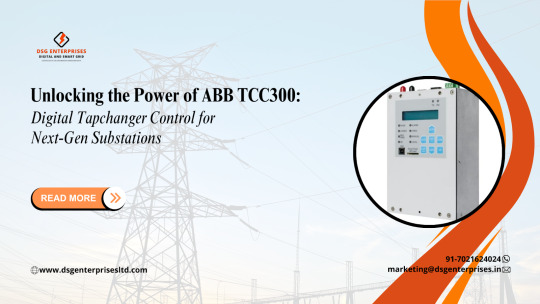
In the ever-evolving landscape of power systems and smart grid technology, the demand for intelligent, reliable, and future-ready solutions is at an all-time high. Substations, acting as the nerve centers of electrical grids, require advanced tools to ensure seamless operation, adaptability, and security. Enter the ABB TCC300 Digital Tapchanger Control Numerical Relay—a modern marvel engineered to revolutionize the way substations manage on-load tap changers (OLTCs) in power transformers.
This comprehensive blog explores the capabilities, features, benefits, and real-world applications of the ABB TCC300, shedding light on how it empowers next-generation substations to meet evolving grid requirements.
Understanding the Role of Tapchanger Controls in Substations
Tapchangers are essential components in power transformers, responsible for regulating voltage levels in response to fluctuating load demands. By adjusting transformer tap positions, they maintain stable voltage at the consumer end, improving efficiency and reducing equipment stress.
Traditionally, OLTCs were controlled using mechanical or analog systems—adequate in their time but lacking the intelligence, communication, and adaptability needed in today’s digitally interconnected grids. With the integration of renewable energy sources, electric vehicles, and distributed generation, voltage stability has become more critical and complex than ever before.
That’s where ABB’s TCC300 steps in. It replaces aging analog controllers with a smart, digital, microprocessor-based solution that integrates seamlessly into modern substation automation systems, ensuring accuracy, visibility, and long-term sustainability.
What is the ABB TCC300?
The ABB TCC300 is a compact, powerful digital tapchanger control numerical relay designed for monitoring, metering, and controlling OLTC operations. It is optimized for both new installations and retrofit applications, allowing utility operators to future-proof their infrastructure without massive investments or extensive rewiring.
Whether you're replacing legacy tapchanger relays or deploying next-gen smart substations from scratch, the TCC300 delivers a blend of flexibility, precision, and intelligence to manage voltage regulation efficiently and securely.
Key Features and Benefits of ABB TCC300
Let’s explore the features that make the TCC300 a standout tapchanger controller in the industry:
1. Advanced Monitoring and Metering Capabilities: The TCC300 provides robust monitoring of essential transformer parameters. It supports:
Single and three-phase demand metering
Accurate time/date-stamped data logging
Real-time tracking of voltage, current, and power metrics
This high-resolution metering allows utility teams to gain granular insights into transformer performance, facilitating predictive maintenance, compliance reporting, and operational efficiency.
2. Harmonic Analysis and Smart Load Management: Power quality is a growing concern in today’s grid. The TCC300 supports 64 samples per cycle, enabling accurate harmonic monitoring up to the 31st harmonic of current and voltage. This level of detail helps utilities:
Detect and mitigate harmonic distortions
Protect sensitive equipment
Maintain power quality standards
It also features:
Line Drop Compensation (LDC) using R & X or Z methods
Smart Reverse Power Detection to prevent unwanted backfeeding, especially important in DER-rich grids
This enables operators to maintain voltage profiles and prevent undesirable conditions such as reverse power flows that could destabilize the system.
3. Powerful Communication Capabilities: In the age of Industry 4.0, connectivity is everything. The TCC300 offers:
Support for open communication protocols like IEC 61850, DNP 3.0, and Modbus
Optional RJ45 Ethernet, fiber optic Ethernet, and Bluetooth interfaces
Wireless configuration and remote diagnostics
This makes it easier than ever to integrate the TCC300 into SCADA, EMS, or other digital platforms, ensuring real-time data exchange, fast control response, and simplified remote management.
4. Cybersecurity Readiness: With growing threats to critical infrastructure, ABB has embedded multiple layers of cybersecurity in the TCC300:
Role-based access control
Encrypted communication
Secure firmware and configuration updates via SD card, eliminating laptop dependency
This reduces the attack surface and safeguards the system from unauthorized tampering or accidental configuration errors.
5. Easy Installation and Retrofitting: The TCC300 is engineered with a retrofit-friendly design, minimizing the challenges traditionally associated with equipment upgrades. ABB provides:
Adapter panels compatible with legacy systems
Built-in CT shorting protection
Flexible mounting configurations
This plug-and-play approach shortens project timelines, reduces installation costs, and avoids extended substation outages during transition.
6. Transformer Paralleling and Coordination: In many substations, multiple transformers operate in parallel. The TCC300 simplifies their coordination with support for:
Circulating current method
Master/Follower peer-to-peer circuitry
Reactive power (VAR) sharing
Up to 16 transformers in parallel
Such capabilities ensure load balance, voltage stability, and efficient transformer usage across complex electrical networks.
7. Wide Environmental Tolerance: With an operating range from -40°C to +80°C, the TCC300 is built to endure the most extreme environmental conditions—be it scorching heat, freezing cold, or high humidity. This durability ensures reliable operation in outdoor or remote substations where maintenance access is limited.
Integration with ABB TCC600 Software
Ease of configuration and diagnostics is critical for efficient relay management. The TCC300 integrates seamlessly with ABB’s TCC600 software, providing:
A menu-driven user interface for intuitive navigation
Remote or local access via modem or serial connection
Configuration, event log access, and performance diagnostics
This powerful tool reduces technician training time and ensures rapid fault resolution, enhancing operational continuity.
Applications and Use Cases
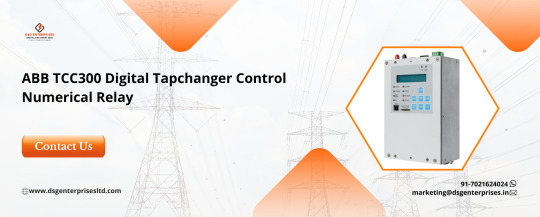
The versatility of the ABB TCC300 allows it to be deployed across a wide range of power environments:
Utility Companies Modernizing Legacy Infrastructure: Replacing outdated analog tapchanger relays in existing substations without full-scale upgrades.
Smart Grids and DER-Integrated Networks: Where real-time communication, fast response, and intelligent controls are essential for managing solar, wind, and other distributed energy sources.
Industrial Plants and Large Facilities: To maintain precise voltage regulation for sensitive manufacturing equipment and machinery.
Renewable Energy Installations: For managing voltage fluctuations and coordinating with fluctuating generation profiles.
Remote or Harsh Climate Substations: Where environmental resilience and remote monitoring are crucial to reduce operational risks and maintenance visits.
Why Choose ABB?
ABB is a trusted global leader in power technology with a legacy of delivering innovative, durable, and intelligent electrical solutions. With the TCC300, ABB brings a product that blends decades of industry expertise with modern digital advancements.
Unique Selling Points:
Compact footprint with maximum functionality
Global protocol compliance for easy integration
Intuitive software support with TCC600
Secure and firmware-friendly operation
Efficient retrofitting and minimal rewiring
Robust analytics and paralleling tools
Utilities, EPCs, and industrial clients gain long-term value through reduced operational risk, improved grid reliability, and optimized transformer performance.
Conclusion
The ABB TCC300 Digital Tapchanger Control Numerical Relay is more than just an upgrade—it's a strategic investment for a smarter, more connected, and more secure power grid. In an era of growing complexity, the TCC300 offers a reliable foundation for substation automation, advanced monitoring, and dynamic control.
By adopting this state-of-the-art controller, power operators can:
Modernize outdated systems
Improve grid reliability and efficiency
Ensure seamless communication and cybersecurity
Scale up for future energy trends and regulations
Whether you're transitioning into smart grid operations or seeking to enhance transformer performance, the ABB TCC300 is your gateway to next-generation voltage regulation.Click here to explore the product category and connect with Digital & Smart Grid Enterprises today. Discover how the ABB TCC300 can unlock operational excellence, reduce downtime, and deliver unmatched control over your voltage regulation needs.
#SmartGridSolutions#PowerSystemAutomation#SubstationInnovation#VoltageRegulation#ABBRelay#DigitalTapchanger#GridReliability#FutureReadyGrid#SubstationControl#IndustrialAutomation#EnergyEfficiency#PowerTransformer#GridModernization#RelayProtection#ElectricalEngineering
0 notes
Text
As the energy grid faces rising demand and increasing unpredictability from renewables, high-performance conductors (HPCs) offer a smarter, faster alternative to massive infrastructure overhauls. This in-depth guide explores how advanced transmission technologies like ACCC and ACSS are doubling capacity, improving efficiency, and boosting grid resilience—without building new towers. For utilities and energy professionals navigating the clean energy transition, HPCs are more than an upgrade—they're a strategic advantage.

#HighPerformanceConductors#EnergyTransition#GridModernization#FutureOfEnergy#SmartGridSolutions#SustainableInfrastructure#ACCCconductor
1 note
·
View note
Text
Microbial Fuel Cells: $1.2B → $3.8B (2034) | CAGR 12.2%
Advanced Microbial Fuel Cells (MFCs) Market is projected to grow from $1.2 billion in 2024 to $3.8 billion by 2034, with a CAGR of 12.2%. This cutting-edge bioelectrochemical technology utilizes electrogenic microorganisms to convert organic waste into clean electricity, offering a sustainable alternative to fossil fuels.
To Request Sample Report: https://www.globalinsightservices.com/request-sample/?id=GIS10820 &utm_source=SnehaPatil&utm_medium=Article
Advanced MFC systems integrate nanostructured electrodes, graphene-based anodes, and AI-driven biosensing to enhance electron transfer efficiency, scalability, and biocatalyst stability. Recent innovations in synthetic biology and bioengineered microbial consortia have further optimized electrode-microbe interactions, enabling higher energy outputs and waste degradation rates.
Microbial fuel cells are gaining traction in wastewater treatment plants, remote power applications, and biosensing technologies, where they provide dual benefits of energy generation and environmental remediation. With growing interest in smart grids, decentralized energy systems, and self-sustaining power solutions, MFCs are expected to play a key role in the next-generation energy ecosystem.
As industries shift towards carbon-neutral and circular economy models, Advanced MFCs are poised to become a cornerstone of sustainable power generation, bridging the gap between biotechnology and renewable energy.
#MicrobialFuelCells #Bioelectricity #CleanEnergyTech #SustainablePower #ElectroactiveBacteria #GrapheneElectrodes #NanotechEnergy #Bioelectrochemical #RenewableEnergy #GreenTechnology #AIForEnergy #CarbonNeutralFuture #NextGenEnergy #WasteToEnergy #EnergyHarvesting #SmartGridSolutions #FuelCellTech #SyntheticBiology #BioRenewables #MicrobialElectrogenesis #SustainableInnovation #BiosensingTech #EcoFriendlyEnergy #WastewaterEnergy #BiodegradablePower #CircularEconomy #BioEnergySolutions #EnergyFromWaste #ElectroactiveMaterials #CarbonCaptureTech #FutureOfPower #GreenEnergyRevolution #SmartEnergySystems #BiotechnologyDriven #SelfSustainingPower
0 notes
Photo

Merwin Group Clients reach wide across and deep into the grid. Having opportunities in making positive impacts with a tremendous variety of organizations is extremely rewarding. Our Clients, each with their unique blend of products or services, are each concentrated on enhancing the electric grid with exceptional reliability and availability. Their focus coupled with our capabilities has enabled us to deliver exceptional skilled individuals and teams. Our Clients’ needs are matched with commitment and experience across grids spanning the entire range of functions from generation to transmission and distribution. We have Client successes in a comprehensive grouping of equipment, systems, design, supply, construction, commissioning, testing, interconnection, and services. Our Client list includes organizations of every size, focus, and concentration while encompassing major firms to start-ups.
0 notes